Set Review ➟ 42111 Dom’s Dodge Charger
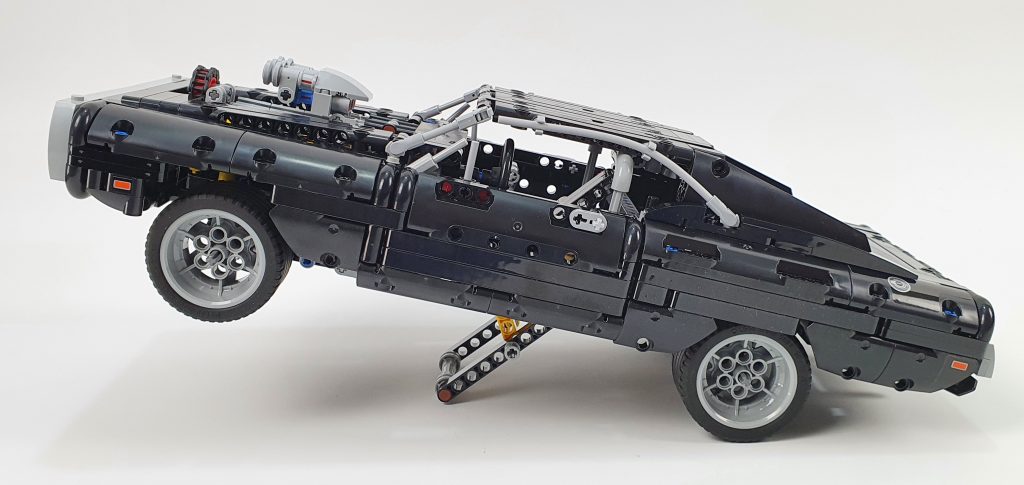
Part count: 1.077
Price: 99,99€ / $99,99 / £89.99
Release Date: 2020.Apr
Age: 10+
Scale: 1:13
Stickers: Yes
B-model: Not available
Hispabrick Magazine invited Fernando Correia from TechnicBRICKs to review the 42111 Dom's Charger set for us. Below is his take on this model:
The model, the box and the contents:
Whether you’re a fan of the movies or not, the “Fast & Furious" franchise has become embedded in pop culture, and it's one of those instances where some of the assets, in this case the cars, are as highly regarded as the human characters. With the current TLG's appetite for licenses, it is not a big surprise that they partnered with Universal Studios to make a LEGO model of the Fast saga despite the violent nature of the movies. It is more of a surprise that it materialized as a LEGO Technic set, but let's discuss that further on in this review.
One of the cars from the F&F series that is particularly cherished is the 1970 Dodge Charger owned by Vin Diesel's character Dominic Toretto, which has appeared in multiple films from the franchise. The model featured in LEGO Technic 42111 set - Dom's Dodge Charger - resembles most a Dodge from the first movie in 2001 ("The Fast and the Furious"), as depicted in the building instructions section dedicated to some of the Dodges appearing in the different movies.
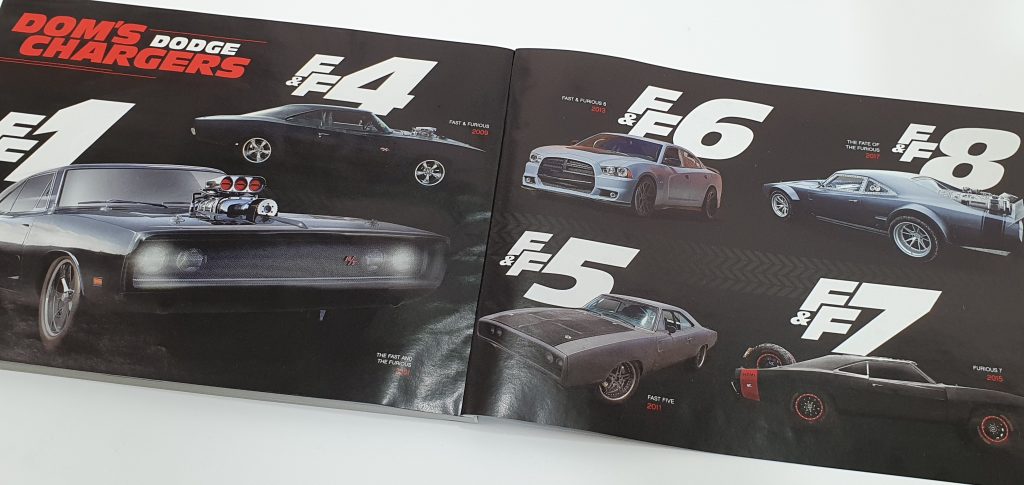
This model was set to be released near the "Fast & Furious 9" film which was originally scheduled to debut in May this year, but due to the COVID-19 pandemic its release was pushed back a year. Those who got disappointed with this delay, could at least enjoy the LEGO release as initially planned. After all, many sets should have been already produced, when we all were being cooped up at home.
The set is presented in a quadrangular and almost square box, which is a bit unexpected for a muscle car. Inside it includes the parts to build the model of course, a quality instructions book and a small sheet of stickers to apply in the model. Just a few stickers unlike other Technic sets which are more extensively covered with stickers.
It is an almost totally black model with just a few highlights, which makes it quite a dark and without contrast set, but still true to the original in that aspect.

The new elements:
It is not uncommon for Technic sets to introduce one or more new elements, or at least to bring some parts in never before released colors. So this is one of the second case!
This set includes the recent 11x15 open frame (39790) previously introduced with 45678 SPIKE Prime in Medium Azure, now released in a much more useful color as it is the case of Dark Bluish Gray. And also the latest driving ring extension with 8 teeth element (35186), previously only available in yellow and now also in Light Bluish Gray.

The functions:
This model features several manual functions, which are:
- Hand-of-God (HoG) steering, with a gear knob between the roof and the trunk. The steering wheel at the driver's front is fake and doesn't steer anything.
- Double wishbone independent suspension in the front wheels, and rear live axle in the back.
- V8 engine connected to rear axle, which is accurate as the real 1970 Dodge Charger used rear wheel drive. There is no transmission though!
- Opening doors.
- Opening hood for a better view of the V8 engine and the respective turbo charger.
- Opening trunk with two nitro bottles (N2O) in the interior.
- Fold-out stand for wheelies.
At this point I'd make a special reference to the model's most distinctive function here, and will leave the rest to discuss in further sections.
TLG makes reference in this model press release to a "wheelie bar to show off the car’s best moves", although the truth reveals there is not a real wheelie bar, rather something totally unrealistic.
A wheelie bar is a device whose most obvious function is to prevent a vehicle from flipping over during wheel stands. Wheelies are common in auto or motorcycle drag racing, but also useful for those who want to practice the mastering of the wheelie trick.
What this model features is, at most, a fake wheelie bar or more precisely a foldable stand. Besides having small wheels, its main function is to hold the car in stand position. This comes from the iconic final scene in the first movie where Dominic does a wheelie while racing against Brian's Toyota Supra (a lot of debate about who wins, but likely no one did).
The folded stand with its small wheels, will let you drag the car along on the rear wheels to mimic the movie scene (it also works for an inverted wheelie...), or it can be used to keep the car on display in its famous manoeuvre position.


The building experience:
The set comes with parts bags numbered 1 to 4. The first set of bags allow us to build the rear axle with its functional suspension and drive ready with differential; the HoG input that will set the steering; and a section of the so-called "wheelie bar" that allows you to pose the car at an angle.
You may find it weird that LEGO didn't use the new differential also introduced this year with the 42109 "App-Controlled Top Gear Rally Car". While the Dodge Charger is not motorized, hence aimed to be manually pushed, the Top Gear car is motorized and potentially subject to higher stress - maybe the designers took the chance to save a few cents here by using less and arguably simpler parts.
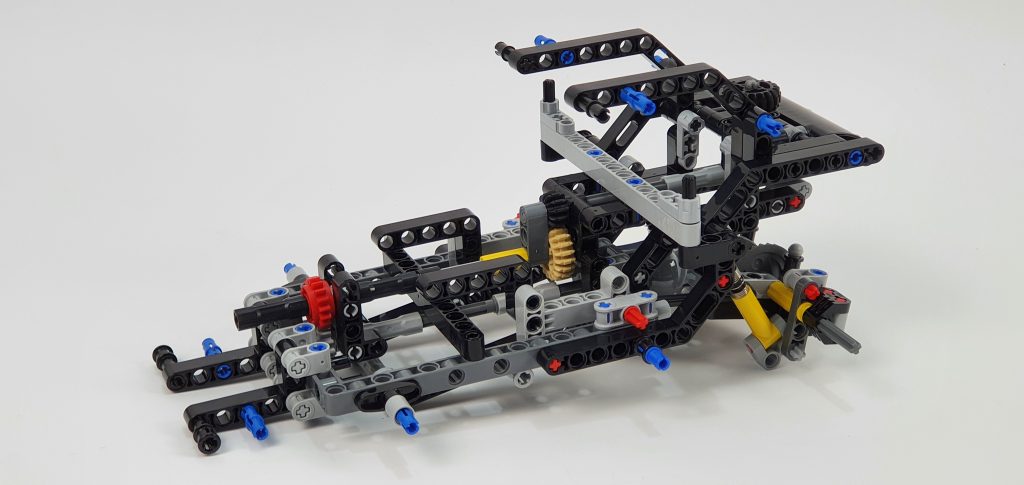
Proceeding to the second set of bags we will get a fully working drivetrain with the V8 engine, a fully functional steering and suspension on the four wheels. The lever to actuate the "wheelie bar" is also added, so that it stands with the front wheels above the ground.
Unlike probably all other previous Technic official models, notice how early in the building process the wheels and tires are attached to the chassis. This is probably what most of the fan builders also do when they build other models after all (put it on wheels as soon as possible), but I guess the reason for the designers choice was related to the presence of the "wheelie bar" and the possibility to test it right away.
After the third set of bags we get the front section finished, with the turbo charger visible through the opening bonnet, and also get the opening doors in place.
The turbo charger actioned by the V8 engine via a link chain is a nice and illustrative detail addition to this model.
Don't tell me there are no mirrors in this car (at least one as this is a 70s car) !?...
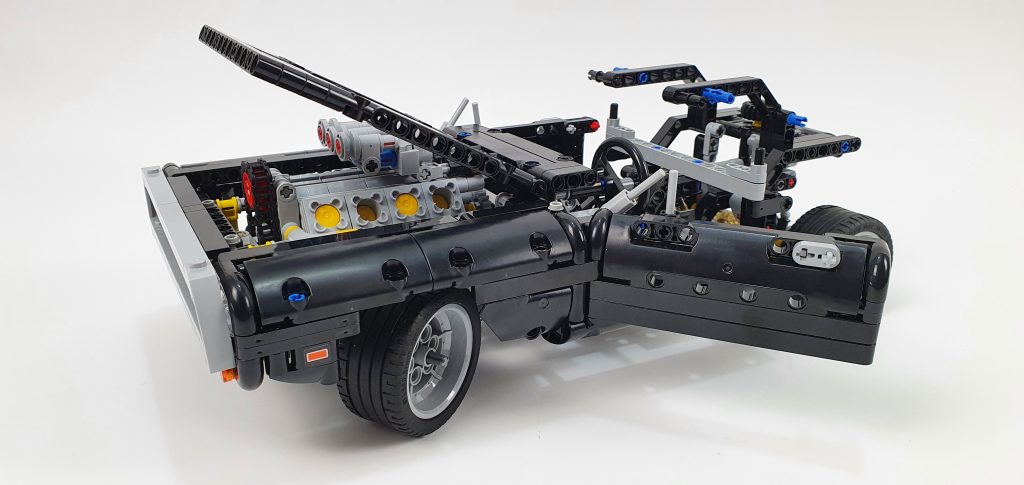
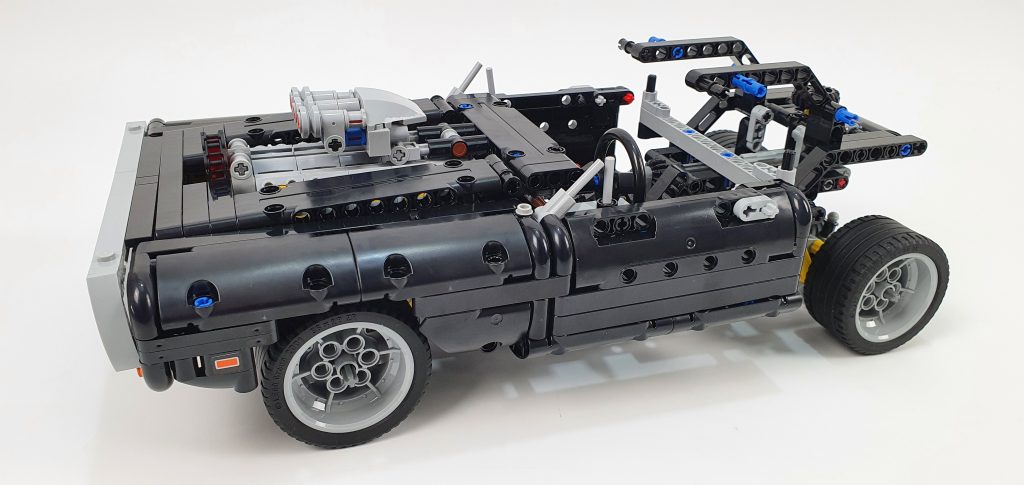
The car is complete after the fourth set of bags, and no, there are no side mirrors. Not even the driver's one.
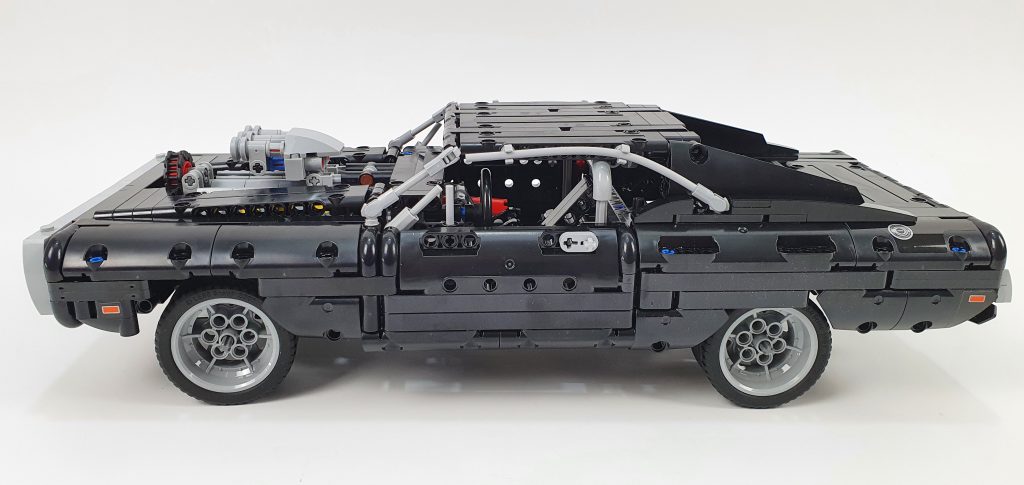
If we look at the building instructions pages with images from the cars in several of the movies (above), we can see that the oldest ones do not present a mirror, but these are pictures from the passenger side, and Dom's car in the movie has the driver's mirror... Maybe this is what fouled the designer for not having included one...
Curiously there is a short sequence of frames during the movie's final race, where suddenly and miraculously the mirror is missing from Dom's door (some stunt thingy I guess).
Love it or hate it!
This model uses a 1:13 scale, which is very unusual for a Technic car. It is not that large which does not allow to bundle a lot of functions, but at the same time it is also not so small that it justifies too few functions or details. Let's take the absence of a functional steering wheel as an example - it is not expected for a car this size when even the 10265 LEGO Creator Expert Ford Mustang, a SYSTEM based and smaller scale model got one.
As you might have concluded by now, I have mixed feelings about this set, and honestly there are more things here that I dislike than those I like.
I feel the almost completely black car being too dark and monochrome, to be appealing as a LEGO Technic set. This combination is also not helping to highlight the somewhat monotonous shapes of the car, making it look like a huge black box without details.
Furthermore, the shapes do not accurately fit the real car, specially from a side view perspective. For example, the sharp edged and the beam-built wheel arches feel like a poor exercise in design.
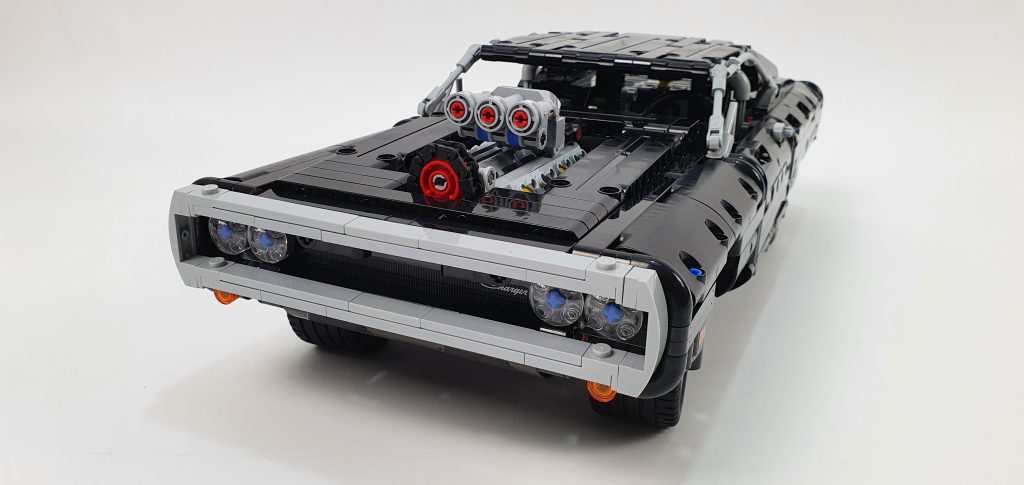
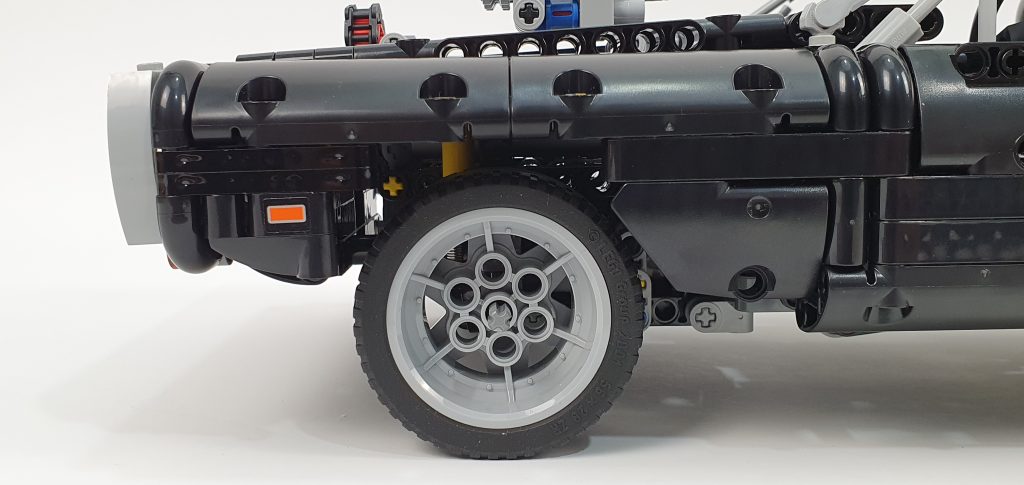
It is understandable at this scale that it is difficult to achieve smooth and realistic lines with the available Technic elements, and even if other existing parts like mudguards would have been attempted, the car lines would not be easily achievable.
All in all, it seems a bad choice for a licensed Technic model. Certainly it could have been more accurate and better fit as a Creator Expert set. Not really a problem with the design work itself, but the base’s straight shapes, angles and color would hardly fit the Technic system at the chosen scale.
At the exterior the window trims are not pretty, the A-pillars are too flimsy, the wing windows and rear windshield are a total mess, and the front grille is quite fragile and has way too many SYSTEM parts, which is something unthinkable for an official Technic design not so long ago.
And finally the wheels seem too small for the car scale making it look unrealistic, and the body sides protrude too much from the wheelbase, i.e. the body is much larger than the chassis.
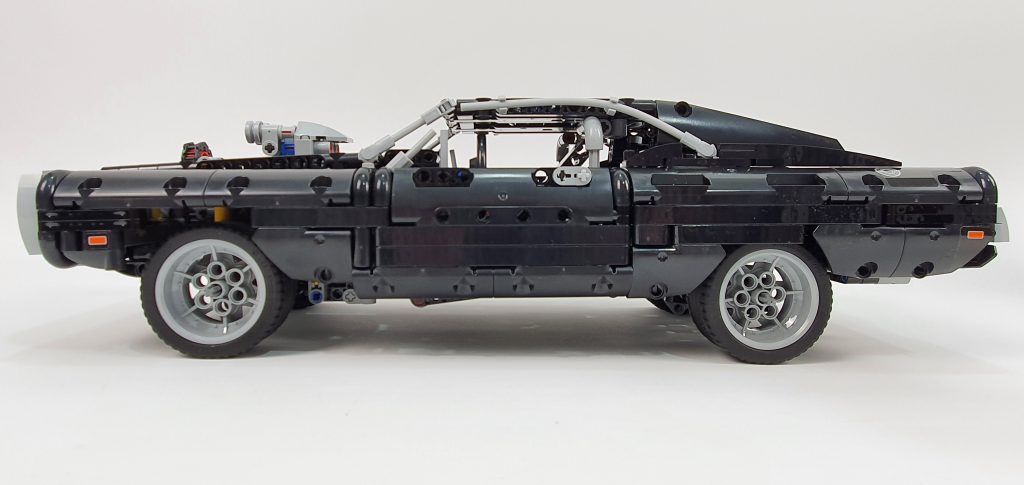
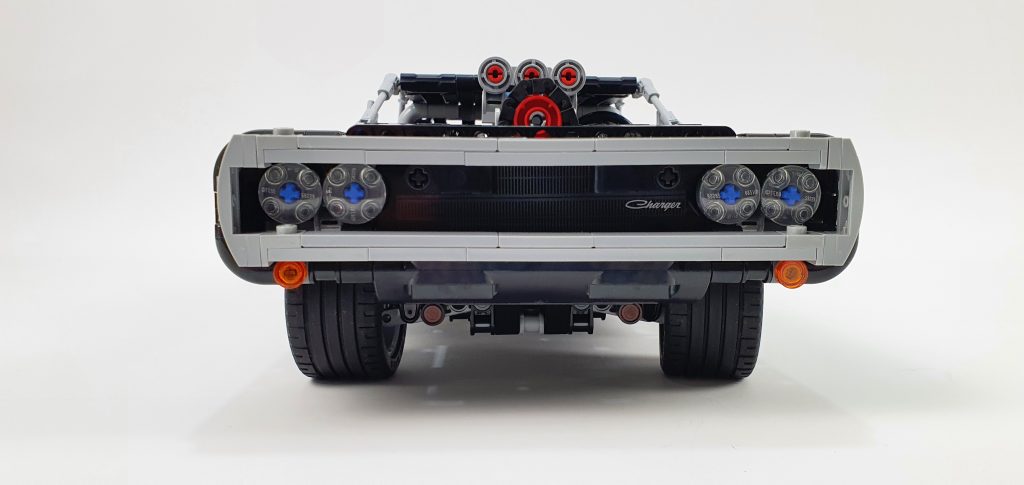
Looking into the interior, well... the cab features just the bare minimum, with one seat and a fire extinguisher without further details. The steering wheel position looks unrealistic and the trunk is also very crude - despite the two nitro bottles inside, the bottom is just a big hole for us to see through...
Yet, the lever used to activate the "wheelie bar" is of difficult access and requires so much force to lift the front, that you likely will end lifting the car by hand at then move the lever in a second step.
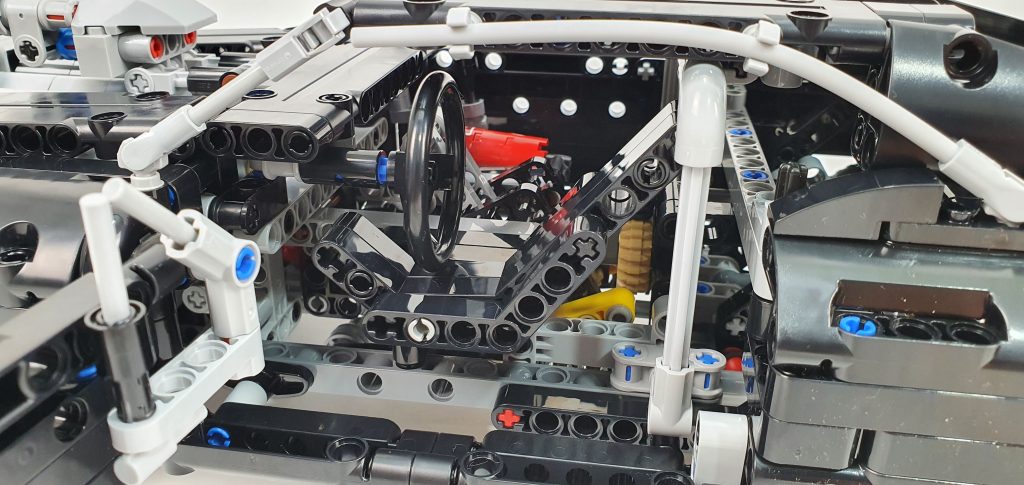
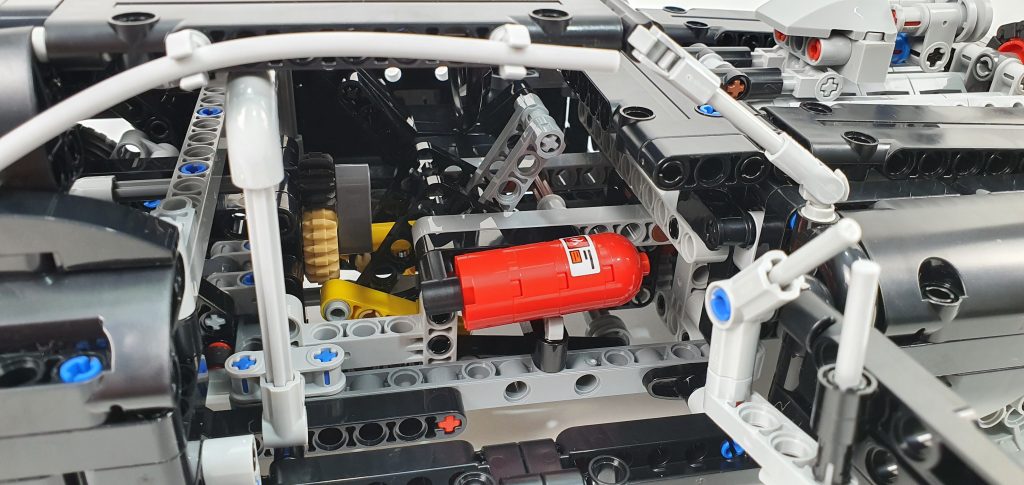
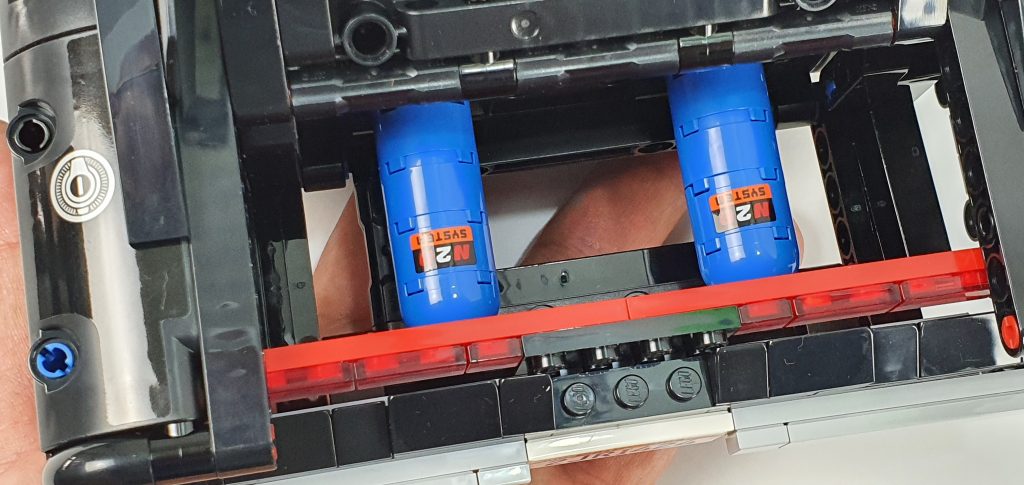
As a conclusion the Dodge Charger chassis despite a simple one and without transmission feels way better than the corresponding body work. The functions work flawlessly and the suspension is quite responsive. The rear axle live suspension is nice and soft, although the axle clearance is minimal and it almost touches the ground. The rear suspension is also slightly more elevated than its front counterpart which does not necessarily correspond to the original car setup.
Unfortunately, and as many other recent LEGO Technic licensed models, this one also does not offer building instructions to build an alternative aka B-model.
Conclusion:
If you're not a die-hard fan from the Fast saga, who wants to have this set on display no matter what, I would recommend to take what it costs to buy some other LEGO Technic set of similar value.
10234